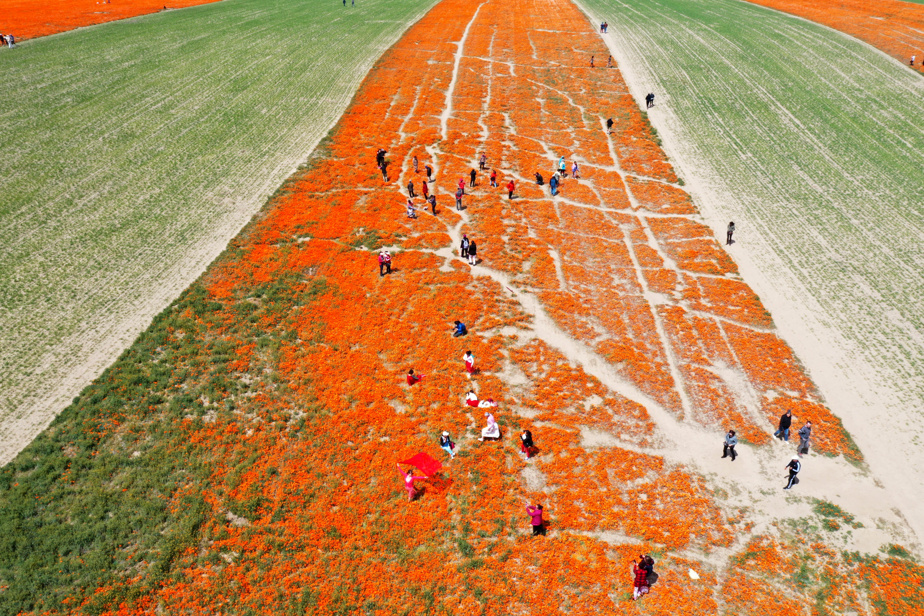This spring, California is overrun with flowers that are making a remarkable comeback after years of drought in the American West.
We are not talking about a few flowers, but entire fields covered with wild flowers, to the point that the phenomenon can be observed from space. On April 11, NASA released images taken a few days earlier by the Landsat 9 satellite, which was passing over California. These show an area of the Carrizo Plain, north of Los Angeles, where the purple color stands out clearly. Images taken by the US space agency two years earlier showed a starkly different picture with fields hard hit by drought.
University of California researchers counted 10 super blooms in Southern California over the past 40 years. Nine times out of ten, they occurred after a period of heavier than average rainfall. Cooler temperatures in the spring also favor the emergence of a super bloom. The last such event occurred in 2019. “The super bloom of 2023 is an extraordinary event. It’s one of the most beautiful blooms I’ve ever seen, Naomi Fraga told La Presse. It’s an incredible event for a botanist,” adds the Director of Conservation Programs at the California Botanical Garden.
You’re in the field, if you allow us a pun! This event has also become very popular with the population. In 2019, during the last superbloom, many Californians visited their fields to photograph spectacular landscapes. It was not uncommon to see queues to enter sites hosting such scenes. Visit California even devotes a section of its website to the phenomenon and suggests the best places to observe the most beautiful flowery landscapes.
There are so many of them then! Last February, authorities announced the closure of the Walker Canyon site, south of Los Angeles, for the duration of the bloom, to avoid the “nightmare” scenario that occurred in 2019, when the last great flowering. That year, motorists stopped squarely along Interstate 15 to photograph the landscape. The California Highway Patrol had to send officers there to manage traffic and one of them died after being hit by a car when he was giving a ticket to a motorist. “There wasn’t a single neighborhood that wasn’t affected by traffic jams,” Lake Elsinore Mayor Natasha Johnson told the weekly Desert Sun recently. Our five freeway exits into town were blocked. The highway was completely blocked, people were getting out of their cars. Our rescuers were struggling to make their way through traffic. Our residents had no quality of life for several weeks. The flowers were beautiful, but the scene was a nightmare. »
The Mayor of Lake Elsinore probably agrees with you, indeed. It should be noted that the drought in California in recent years has literally prevented the seeds of wildflowers buried in the ground from germinating. What is fascinating, however, is that these can lie dormant for years waiting for rain. Superblooms make it possible to imagine what California looked like hundreds of years ago, experts say. But these scenes are likely to be extremely rare in the future.
“Flowering [of 2023] could be the best by the end of our days. With climate change, you don’t really know what’s going to happen,” Evan Meyer, director of the Theodore Payne Foundation, which advocates for the preservation of native plants, told The Washington Post. “The effects of climate change will certainly have an impact on these ecosystems,” adds Naomi Fraga. This can lead to the proliferation of invasive species, prolonged droughts and changes in rainfall patterns. It is difficult to say exactly what will happen, but if we experience extreme droughts for several years, these events could become increasingly rare. »

